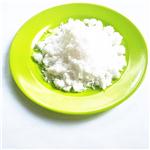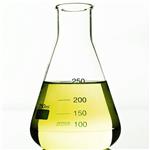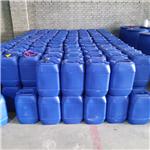- Polyurethane foams
-

- $0.00 / 25KG
-
2023-11-11
- CAS:9009-54-5
- Min. Order: 1KG
- Purity: 99%
- Supply Ability: 50000KG/month
- Polyurethane foams
-

- $30.00 / 1kg
-
2023-09-20
- CAS:9009-54-5
- Min. Order: 1kg
- Purity: 0.99
- Supply Ability: 20 tons
- Polyurethane foams
-

- $0.00 / 1KG
-
2023-09-06
- CAS:9009-54-5
- Min. Order: 1KG
- Purity: 99%
- Supply Ability: 500000kg
|
| | Polyurethane Basic information |
| Product Name: | Polyurethane | | Synonyms: | Polyurethanes, cellular;The following companies react isocyanates or prepolymers with polyols to produce polyurethane foams. The list is incomplete.;POLYURETHANEOLIGOMERS;POLYURETHANEVARNISH;POLYURETHANELACQUER;Polyurethane foam: (Urethane polymers);GTR Foam Polyfoam;Polyurethane elastomer | | CAS: | 9009-54-5 | | MF: | C3H8N2O | | MW: | 0 | | EINECS: | 210-898-8 | | Product Categories: | | | Mol File: | Mol File | ![Polyurethane Structure]() |
| | Polyurethane Chemical Properties |
| Stability: | Stable. Combustible. Incompatible with strong oxidizing agents. | | InChI | InChI=1S/C3H8N2O/c1-2-5-3(4)6/h2H2,1H3,(H3,4,5,6) | | InChIKey | RYECOJGRJDOGPP-UHFFFAOYSA-N | | SMILES | N(CC)C(N)=O | | CAS DataBase Reference | 9009-54-5 | | IARC | 3 (Vol. 19, Sup 7) 1987 |
| | Polyurethane Usage And Synthesis |
| Chemical Properties | Polyurethane foams are resistant to a wide range of solvents. In this
respect, polyester foams are generally superior to polyether foams, particularly
in resistance to dry cleaning solvents. Polyurethane foams are
subject to degradation by aqueous acids and alkalis and steam. Ester, amide
and urethane groups represent sites for hydrolytic attack. Since the ether
group is not readily attacked, polyether foams are generally more resistant to
hydrolysis than polyester foams. | | Chemical Properties | clear solid, white powder or milky suspension | | History | Polyurethanes are an immensely versatile class of polymers used in insulators, foams, elastomers, synthetic skins, coatings, adhesives, and so forth. Polyurethane was first developed through essential diisocyanate polyaddition reactions by Dr. Otto Bayer and partners. In 1937, it reached industrial-scale synthesis and was established in the market in the 1950s[1].
| | Uses | Prosthetic aid (internal bone splint).
Polyurethane resins and foams are two important industrial polymers. They can be produced as rigid, semirigid, or elastic foams or resins, which give PUR many versatile commercial uses. Polyurethane can be found in furniture, bedding material, automotive sealing material, adhesives, carpet, packaging material and coatings, and many other products. It is favored industrially because of its resistance to oil, light, and solvents, in addition to its strength and flexibility. These polymers are formed by polyaddition reactions between a diisocyanate and a polyhydroxyl compound, such as a polyol. | | Uses | Several isocyanates (tolylene diisocyanate, hexamethylene diisocyanate, dicyclohexylmethane diisocyanate, etc.) are used in preparing polyurethanes. All are lowviscosity liquids at room temperature with the exception of 4, 4�- diphenylmethane diisocyanate (MDI), which is a crystalline solid. The aromatic isocyanates are more reactive than the aliphatic isocyanates and are widely used in urethane foams, coatings, and elastomers. The cyclic structure of aromatic and alicyclic isocyanates contributes to molecular stiffness in polyurethanes. | | Uses | Flexible polyurethane foams are open-cell structures which are usually
produced with densities in the range 24-48 kg/m3 (1.5-3Ib/ft3). The major
interest in flexible foams is for upholstery applications and thus the loadcompression
characteristics are of importance. | | Preparation | Polyurethane foams are produced by forming a polyurethane polymer concurrently
with a gas evolution process. Provided these two processes are
balanced, bubbles of gas are trapped in the polymer matrix as it is formed and
a cellular product results. The matching of the two reactions is essential for
the formation of satisfactory foams. If the evolution of gas is too rapid, the
foam initially rises well but then collapses because polymerization has not
proceeded sufficiently to give a matrix strong enough to retain the gas. If
polymerization is too fast, the foam does not rise adequately.
By selection of appropriate reactants, it is possible to prepare foams of
varying degrees of cross-linking. Slightly cross-linked products are flexible
whilst highly cross-linked products are rigid. Both flexible and rigid polyurethane
foams are of commercial importance. | | Production Methods | Castable polyurethane elastomers are fabricated from polyurethane
prepolymers, which are obtained by reacting an
excess of diisocyanate with high-molecular-weight
diols. These NCO-terminated oligomers (prepolymers)
are commercially available under a variety of
trade names and in numerous types depending upon the
types of diisocyanates and polyols that are used to synthesize
them. The NCO content of these prepolymers can vary from
less than 3% to as much as 20%. A cast polyurethane
fabricator mixes these liquid prepolymers with approximately
stoichiometric quantities of a curing agent (or a
blend of curing agents) such as an appropriate low-molecular-
weight diol or diamine.
Generally a prepolymer is heated to reduce its viscosity
before mixing it with a liquid or a molten curing agent. The
prepolymer curing agent blends have a limited working time
(pot life) during which they are still liquid and can be poured
into molds. The liquid prepolymer/curing agent blend is
degassed and then poured into molds, which are often heated
to expedite curing. After curing, the solid polyurethane
elastomer articles are removed from the mold and are sometimes
finished by keeping them at elevated temperature to
complete the cure and to maximize mechanical properties. | | Brand name | Ostamer (Marion Merrell Dow). | | Hazard | Evolves toxic fumes on ignition. | | Safety Profile | Questionable
carcinogen with experimental tumorigenic data. When heated to decomposition it
emits acrid toxic fumes of CNand NOx. | | References | [1] Sonnenschein, M. “INTRODUCTION TO POLYURETHANE CHEMISTRY.” 2014. 0. |
| | Polyurethane Preparation Products And Raw materials |
|